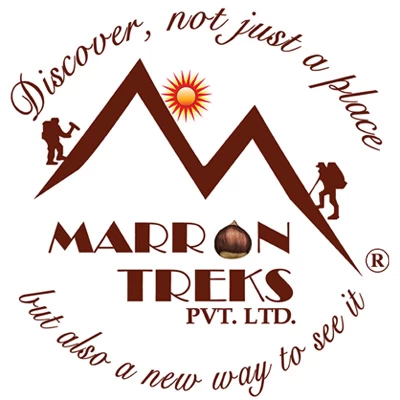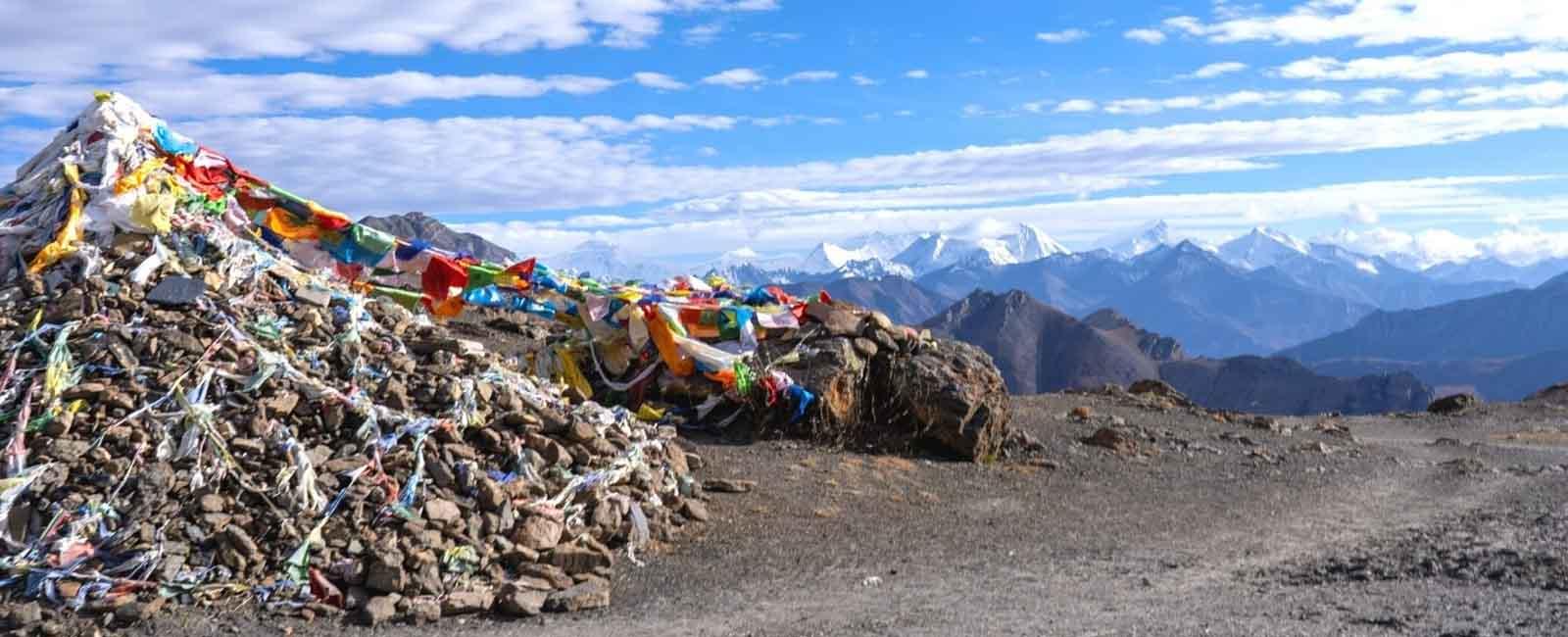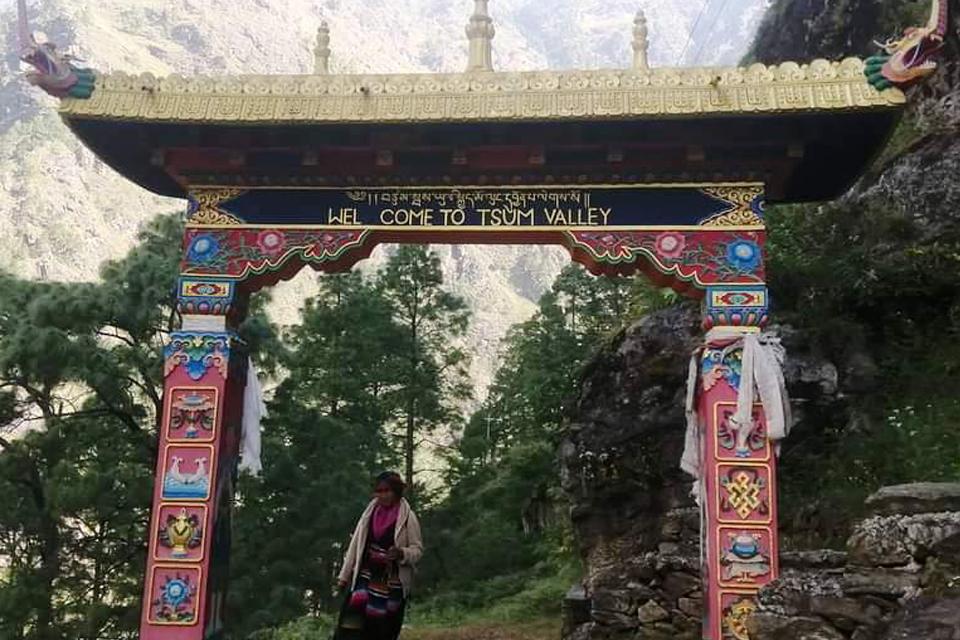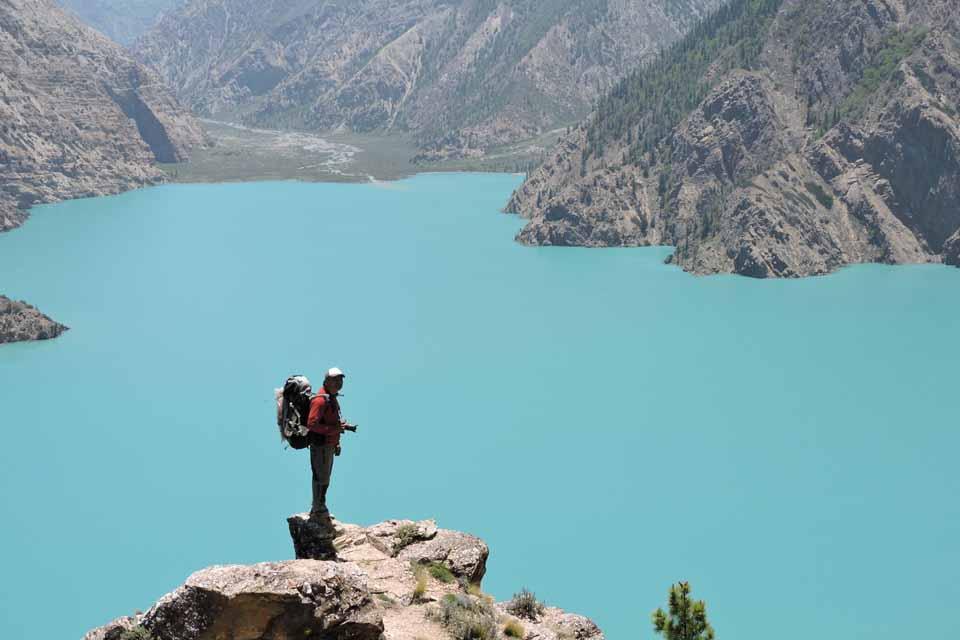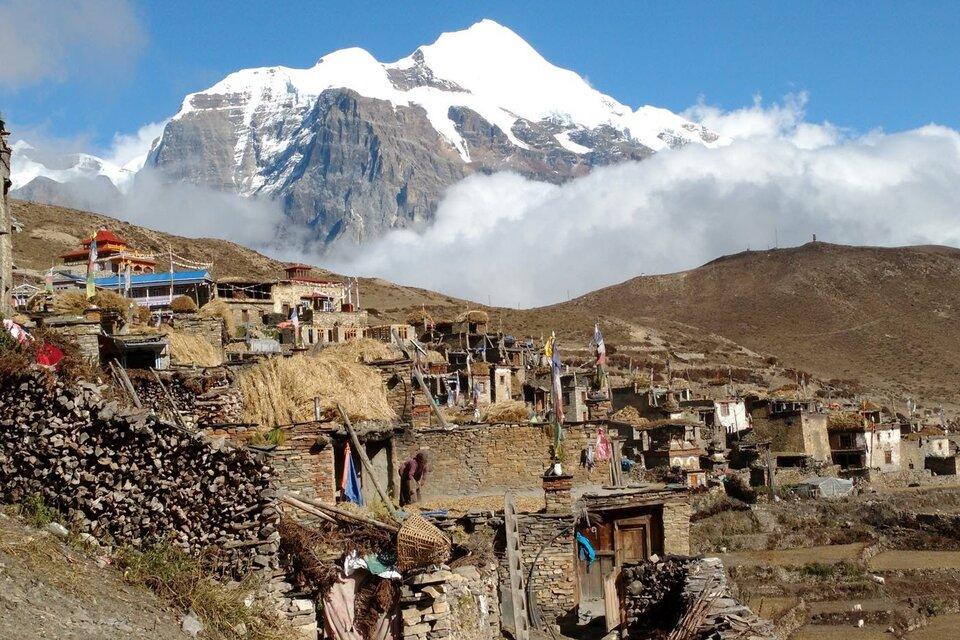Limi Valley Trek
Trip at a Glance
Trek to Limi Valley only opened up in 2002 located in the far north-western region of Nepal with it’s proximity to the Tibet border. Limi Valley trek is a remote and off-the-beaten-path trekking route that goes through the remarkable and secluded landscapes of the Limi Valley. The trek offers majestic mountain views, stunning valleys, and pristine rivers flowing along the trekking trail.
Limi Valley is recognized for it’s marvelous natural beauty where pristine lakes, lush green meadows, snow-capped peaks, and traditional Tibetan villages exist. Limi Valley inhabitants are heavily influenced by Tibetan culture and traditions and trekkers will have a nice opportunity to interact with them to learn more about their unique traditions, rituals, and customs.
The trek to Limi Valley starts from Simikot, the headquarters of Humla district, after flying from Nepalgunj. The remote trekking trail will take you through traditional villages, ancient monasteries, and rugged terrain.
Limi Valley Trek is the ideal option for any adventure seekers looking for an authentic trekking experience in the high Himalayas exploring a remote and untouched region of Nepal and witnessing a stunning Himalayan panorama.
Limi Valley Trek Highlights
- Trek past Remote and Unspoiled Landscape past high mountains, deep gorges, lush green valleys & arid Tibetan plateaus.
- Rich Cultural Experience heavily influenced by Tibetan culture & traditions.
- Historical and Religious Sites like Namkha Khyung Dzong Monastery dating back over a thousand years.
- Stunning mountain scenery of peaks like Saipal Himal and Api Himal ranges.
- Diverse flora and fauna such as blue sheep, Himalayan marmots & various bird species.
- Crossing the Nara La Pass at 4,620 meters (15,157 feet)
Itinerary
Day 01: Arrive in Kathmandu (1400m)
Day 02: Flight from Kathmandu to Nepalgunj (150m / 1 hr)
Day 03: Fly Nepalgunj to Simikot (2,910m) & trek to Dharapuri (2300m/5 hrs)
Day 04: Trek from Dharapuri to Kermi (2,870m/6 hrs)
Day 05: Trek from Kermi to Yalbung (3,060m/6 hrs)
Day 06: Trek from Yalbung to Talkot (3,073m/5 hrs)
Day 07: Trek from Talkot to Yari (3,663m/7 hrs)
Day 08: Trek Yari to Hilsa (3,700m) via Nara La Pass (4,620m/6 hrs)
Day 09: Trek from Hilsa to Manepeme (3,990m/5 hrs)
Day 10: Trek from Manepeme to Til (4,000m/6 hrs)
Day 11: Rest day in Til, by Limi River
Day 12: Trek from Til via Halji to Tatopani (3,950m/8 hrs)
Day 13: Trek from Tatopani to Talung (4,370m/8 hrs)
Day 14: Trek from Talung via Nyalu La Pass (4,949m) to Shinjungma (3,620m/8 hrs)
Day 15: Trek from Shinjungma to Kermi (2,670m/7 hrs)
Day 16: Rest day in Kermi
Day 17: Trek from Kermi to Dharapuri (2,300m/6 hrs)
Day 18: Trek from Dharapuri to Simikot (2,950m/6 hrs)
Day 19: Fly Simikot to Nepalgunj & further flight to Kathmandu
Day 20: Free day in Kathmandu
Day 21: Final Departure
Upon arrival at the Tribhuwan International Airport in Kathmandu, you need to accomplish your entry/visa formalities. You will then be received by a representative from Marron Treks and transferred to your hotel in Kathmandu. Welcome drinks will be served at the hotel and then we will have a quick pre-trip meeting. You can then spend the remaining time resting or as you please. In the evening you can stroll around the vicinity of your hotel just to get the feel of this wonderful city.
After breakfast, you will be driven to the domestic wing of the Kathmandu Airport. About an hour’s flight would take you to Nepalgunj, the western region hub of Nepal, which borders the Indian state of Uttar Pradesh to the South. As we don’t have a connecting flight to Juphal, from where our trek commences, it gives us the opportunity to explore this hot and humid town. The city center, Dhamboji, happens to be the business hub with plethora of hotels and shops. Hindu as well as Muslim culture influence the town. Bageshwori temple and Muslim market are also worth visiting.
Early in the morning, we take a flight from Nepalgunj to Simikot (2,910m), crossing the Terai and entering the Himalayan foothills. We will get our first chance to see the tall, snow-capped Himalayan peaks during the 45-minute flight. After touching down in Simikot, the hub of the Humla area, we will have some time to stroll through the streets of this sleepy hill town and eat a meal that our crew has prepared. After lunch, we'll go across the breathtaking Karnali River valley to reach Dharapuri (2,300m). We'll spend about five hours camping at Dharapuri.
Today, we'll travel along the valley of the Karnali River, passing by a few tiny Hindu and Buddhist communities. On the route, we'll stop for a nice lunch, then we'll tent high above the Karnali with stunning views of the valley. Small hot springs nearby Kermi (about a 30-minute walk) allow us to unwind our muscles. The first entirely Buddhist village we will pass on the trip is Kermi, after which we will spend the next six hours travelling through numerous other tiny Buddhist villages and communities as well as their tiny gompas.
Today also, we mainly stroll by the Karnali River. We will encounter mule, goat, and dzo caravans (a cross between a yak and a cow) that are transporting products from Tibet to the Humla settlements along the way. Along the way, we'll stop for a nice lunch by the river, and after about six hours, we'll set up tent above the river below a tiny village and Namkha Khyung Dzong Gompa, one of the biggest and most significant monasteries in the region.
To go to Talkot today, we walk. The trail will take us high, and the surrounding landscape will shift from deep forests to more open stretches of stone and sand with a few low bushes strewn about. We can walk for around 5 hours to Dhungkar Choezon Gompa, one of the most significant monasteries of the Sakya lineage of Tibetan Buddhism, from our campground beside the river, which is about a 30-minute walk away.
We reach the lonely terrain below the Nara La Pass after a long, tedious ascent. We arrive at a dirt road that was constructed to link the settlements lower in the area to the China/Tibet border around halfway along the journey. This evening, after hiking for around seven hours, we will set up camp below the Nara La Pass with lovely valley views.
Due to the Nara La Pass crossing, it is a taxing day. Tibetan prayer flags in various colors that are flown over the pass in the brisk wind to send blessings into the natural world. On the other side of the pass, there are stunning views of the Alps. From the pass, we can view Tibet and the Limi Valley. We then begin a long descent to Hilsa, a little settlement on the border between Tibet and Nepal. About six hours, camp in Hilsa.
Today, we make another rise that will take us from the Tibetan border to the stunning Limi Valley. Camp for around five hours in Manepeme.
In order to get to the River Limi, where we will halt for lunch, we first travel up and over a minor mountain, then descend. We travel for almost six hours after lunch to reach our campsite in Til
Day of rest in Til beside the Limi River, where we may take brief day hikes, relax by the river, and watch the large Himalayan vultures, or griffons, who are nesting directly above us.
The first stop on this long day is the sleepy town of Halji, which is tucked between the glacier in the north and the snow-capped mountains in the south. Halji is a fascinating halt along the way with its lovely gompa - Buddhist temple and a lengthy wall of mani stones. We eat lunch at a restaurant just outside of Halji before moving on to Tatopani, which means "hot springs" in Arabic. Our camp is located near natural hot springs, which provide us with a chance to wash our clothes and ourselves.
We take an approximately eight-hour trek from Tatopani to our camping spot by the river in Talung across a swampy wetland, up a minor pass, and back down.
For the journey up over Nayalu La Pass, we get an early start. There are stunning 360-degree views from the pass's summit. It takes us about eight hours to travel through lovely grasslands, up over a high pass, and back down to the river to our camping spot.
We had a lengthy, primarily downhill day of hiking through rhododendron forests. After almost seven hours, we re-join the route in Kermi, where we will set up tent above the Karnali River.
Day of relaxation in Kermi, possibly including a trip to the nearby hot springs and day walks.
Today, we go back to Dharapuri along the river. About six hours camping by the river at Dharapuri.
On the final day of the walk, we return to Simikot along a steep incline. We will set our camp in Simikot's modest campground, where we may unwind and spend the next six hours browsing the neighborhood bazaars.
We take off from Simikot in the morning and return from Nepalgunj to Kathmandu the same day.
This is a free day in Kathmandu to fulfill anything that you missed out spotting in this energetic capital of Nepal. You can indulge yourself in shopping or strolling around some of the cultural and historical landmarks of Kathmandu. Thamel is your hot spot for shopping where you can haul all the souvenirs representing Nepal and its culture. May be that in addition to your interesting trip anecdotes, you would also want to take back some stuff for your friends and relatives. In the evening, a farewell dinner with a range of traditional Nepali cuisines, will be hosted by Marron Treks. Enjoy the dinner, pack/prepare yourself for a flight back home and have a beauty sleep.
The trip concludes and our office representatives will take you to the international airport in Kathmandu to catch your onward flight to your next destination or fly back home. You need to be at least 3 hours prior to your flight time at the airport.
Thank you for visiting Nepal and we hope your Himalayan Holiday has come true. Have a safe flight back home!
If you plan to extend your holiday then other travel activities like jungle safari, rafting, mountain biking, bungee jumping etc are also up on the list.
What is included?
- Airport pick-up and drop services.
- Hotel accommodations in Kathmandu with breakfast.
- Kathmandu – Nepalgunj – Simikot– Nepalgunj – Kathmandu round airfares.
- Hotel accommodations in Nepalgunj.
- All trekking accommodation (in tented camps) with breakfast, lunch & dinner.
- Personal insurance for crew members.
- Guide, porters, kitchen staffs and helpers wages for the trekking period.
- Four seasonal sleeping bag (to be returned after trip completion) & Marron duffel bags.
- A comprehensive medical kit (will be carried by the trekking guide).
- All permits, conservation area, and restricted area fees
- Farewell dinner with live Nepalese cultural program.
- All government and local taxes.
What is not included?
- International airfare.
- Lunch & dinner In Kathmandu.
- Nepal entry visa fee – Visa can be obtained upon your arrival at the Tribhuwan International Airport in Kathmandu. (USD30 for 15 days)
- Personal travel insurance.
- Emergency rescue evacuation (to be covered by the client's travel insurance).
- Excess baggage charges (luggage allowance for domestic airlines in Nepal is 15 kgs.).
- Other expenses of personal nature (phone calls, laundry, battery recharge, extra porters, bottle or boiled water, shower etc.)
- Cost incurred due to the addition of extra days or change in the real course of the itinerary because of bad weather conditions, political turmoil or any other unforeseen contingencies.
- Bar bills, alcoholic drinks & beverages.
- Tips for guides, porters & crew (Tipping is expected).
Route Map
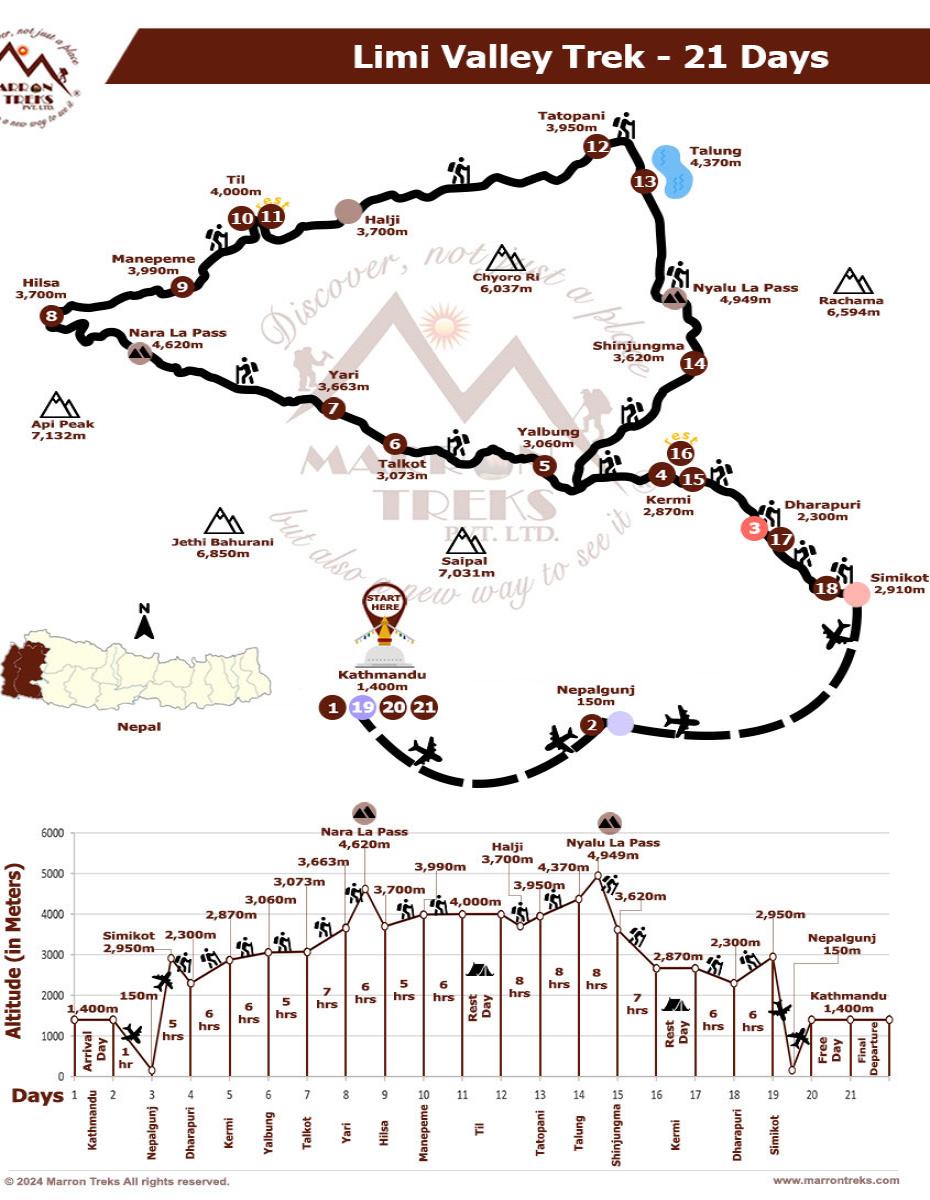
Trip Info
Accommodation
While you are in Kathmandu, we opt to accommodate you in 4- or 5-star hotels like Hotel Royal Singhi (4-star), Hotel Manaslu (4-star), Radisson (5-star), Yak & Yeti (5-star), or similar. During the trek, your primary accommodation will be tents. These are typically high-altitude, double-walled tents for better insulation and weather protection. You'll camp in designated campsites along the route. These are chosen for scenic beauty, flat ground, and access to water sources. Your trekking crew will set up tents that include your own personal tent, dining tent, toilet tent and staff tent.
Meals
We never compromise the quality of food or the health of the trekkers as well as the crew members. Expect meals packed with carbohydrates and protein prepared by our trained cook to provide sustained energy for long trekking days. Think along the lines of porridge, pasta, noodles, spaghetti, French fries, soups, and dehydrated meals.
Acclimatization
Altitude sickness is a serious risk while trekking in the Himalayas. It's important to acclimatize properly by spending a few days at lower altitudes before heading higher. By spending time at lower altitudes before pushing higher, your body has time to adjust. Our trekking packages have enough acclimatization days planned where you'll be spending a day or two at lower altitudes, allowing your body to adjust to the increasing altitude.
Drinking water
You can fill your bottle with boiling water. To make water drinkable, you can use water purification tablets too. But, due to hygienic issues, you should avoid drinking water from taps, rivers, or wells in trekking areas.
Communication
Our office in Kathmandu is in constant communication with your trek guide. In Kathmandu, you can purchase a local sim card for communication purposes. At high elevations, the mobile signal might not be as strong, though.
Luggage
Our porters are paired with one trekker for every two hikers, and one porter can safely carry 30 kg maximum weight. Therefore, we advise you to fill your duffle bag not more than 15 kg with your belongings. You may carry a small backpack with your valuables and informational documents. The things you are not taking along on the trek can be stored in a hotel in Kathmandu free of cost.
Typical Trek Day
Mostly your trek day starts with breakfast at 7-8 am, followed by a 3-4 hour morning trek. Lunch break is around an hour, then you continue trekking to your destination for the day. After reaching the teahouse lodge, you can relax, explore nearby areas, and enjoy dinner at 6-7 pm. Evenings involve socializing, a trek briefing, and leisure activities before bed.
Travel Insurance
It is advised that you arrange your travel insurance before leaving your homeland. The main thing is to make sure that your insurance covers you for both- medical and evacuation costs. Having travel insurance with you makes your trip secure and hassle-free.
Our Guides
Guides play a significant role during the trek. They are the ones who literally decipher the trekking codes for you so that you can actually connect with nature, culture and people along the way. We have helpful and dedicated trekking guides who are very well-versed in the culture, life patterns and every single detail pertaining to the trek region you are traveling in. Thus, in the company of our professional Sherpa guides, your trek becomes not only entertaining but also equally informative.
Porter and Staff Care
When it comes to high-altitude trekking, porters and staff members make up a pivot. Marron Treks ensures that all the porters and staff members going to high altitudes are provided with adequate clothing and equipment. All our field staff are covered by insurance.
